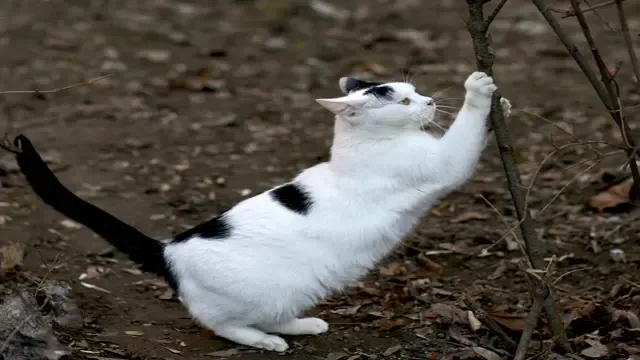If you are the owner of a house cat, there is plenty to learn about when it comes to caring for your cat -both physically and emotionally. When you want to care for your cat’s claws, there are a few tips and techniques to help you go about the care and maintenance of their claws.
Each cat has five front claws on each paw and four claws on each back paw, although some cats are known to have more than the normal amount of claws and toes. Cat claws are made up of the protein keratin, which covers the center of the claw which is complete with nerves and blood.
Uses of Cat Claws
Cats are physically able to control their claws using their ligaments and tendons, allowing them to easily retract and use their claws when needed. Cat claws have multiple uses including digging, balancing, climbing objects, finding and capturing prey and in some cases, even self defense.
De-clawing Cats
One option for house cats includes de-clawing them, which is the process of removing the claws completely from the cat. This option is NOT recommended as it may take away from your cat’s ability to properly defend itself upon accidentally escaping or being left outside. In addition, although the common conception of de-clawing is that only the claws are removed from the cats, the procedure actually involves removing up to the first knuckle in the cat, which often leads to discomfort and pain for your cat after the surgery is complete.
Additional issues that cab arise when from de-clawing your cat include infection, bleeding, lameness, bone exposure (only when procedures are not properly executed), and even litter box issues or behavioral changes.
Alternative Methods to De-Clawing Your Cat
There are other solutions when it comes to your cat’s claws and their scratching. You can choose to purchase a cat scratching post or a large “cat tree” for your home, depending on the space you have available. The more toys and scratching posts (generally made of carpet) you have available, the less likely your cat is to scratch inappropriately around the home on your furniture and other personal belongings.
There are also “soft claws” which are attachments that are soft covers for your cat’s claws which are easily applicable. You can also purchase your own nail trimmers specifically made and designed for cat claws, so you can regularly trim your cat’s nails yourself (if your cat is able to sit still and allows you to gently handle his or her paws with your hands).
Diseases That Can Affect Your Cat’s Claws
Cat claws can contract and carry viruses and diseases, depending on where your cat has been and his or her health history. Bacterial infections and trauma are common in cat claws and are often caused from dirty litter boxes and fecal matter, torn skin, torn claws, and exposure to the sheath of the inner part of the nails. Additionally, fungal conditions and infections including Onychomycosis and systematic lupus erythematosus are also possibilities when dealing with cat claws.
Take notice if your cat is biting or pulling at its nails. This is common during the grooming process; however, nail-biting in cats also has the potential to become a compulsive habit. If this happens with your own cat, it is recommended you speak with your veterinarian about the issue before an infection or condition develops.
Stopping Your Cat From Scratching Around the Home
When you want to stop your cat from using its claws to scratch around the home, it is important to first assess the situation and determine if you can provide simple solutions such as trimming the nails or purchasing a new scratching post for the cat to use.
You can also double-sided tape on the area of the furniture your cat is scratching on, which may turn the cat off from attempting to revisit the area and using as a scratching post. Be sure to monitor the cat at all times to observe his or her reactions and behaviors to the changes you are making around the home. This will help you solve the problem faster while making sure your cat is happy.
Using a spray bottle filled with water is another method of training your cat or getting it stop scratching – although it is very direct. This method works best for hyper cats or wild cats who enjoy getting into trouble regularly.
Once you purchase or add a new scratching post or hanging door scratching toy, you should then encourage your cat to use his or her paws on the post. Once you see the cat near the post, reinforce the positive behavior by petting your cat and if your cat scratches it, reward him or her with a cat treat. If the cat returns to it’s previous behaviour and scratches something it should not, give him or a her a quick spritz. This will likely annoy your cat enough to stop the behaviour.



